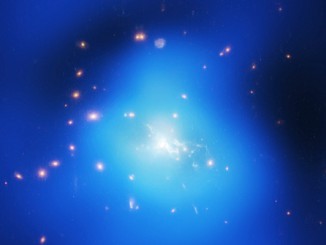The Hubble Space Telescope’s imaging spectrograph focused on Saturn’s north polar region over a period of seven months in 2017, capturing spectacular ultraviolet views of the ringed planet’s energetic aurora. The emissions are caused by electrically charged particles in the solar wind that spiral along magnetic field lines and crash into atoms and molecules in the planet’s atmosphere. Because Saturn’s atmosphere is dominated by hydrogen, its auroras can only be seen in in ultraviolet wavelengths.
The Hubble observations, coordinated by astronomers at the Observatoire de Paris just before and after the northern summer solstice, were carried out in concert with the Cassini orbiter’s “Grand Finale” orbits around Saturn. The images provide fresh insights into the nature of Saturn’s magnetosphere, which is second only to Jupiter’s in size and power.
According to a European Space Agency synopsis, “the images show a rich variety of emissions with highly variable localised features.”
“The variability of the auroras is influenced by both the solar wind and the rapid rotation of Saturn, which lasts only about 11 hours. On top of this, the northern aurora displays two distinct peaks in brightness — at dawn and just before midnight. The latter peak, unreported before, seems specific to the interaction of the solar wind with the magnetosphere at Saturn’s solstice.”




